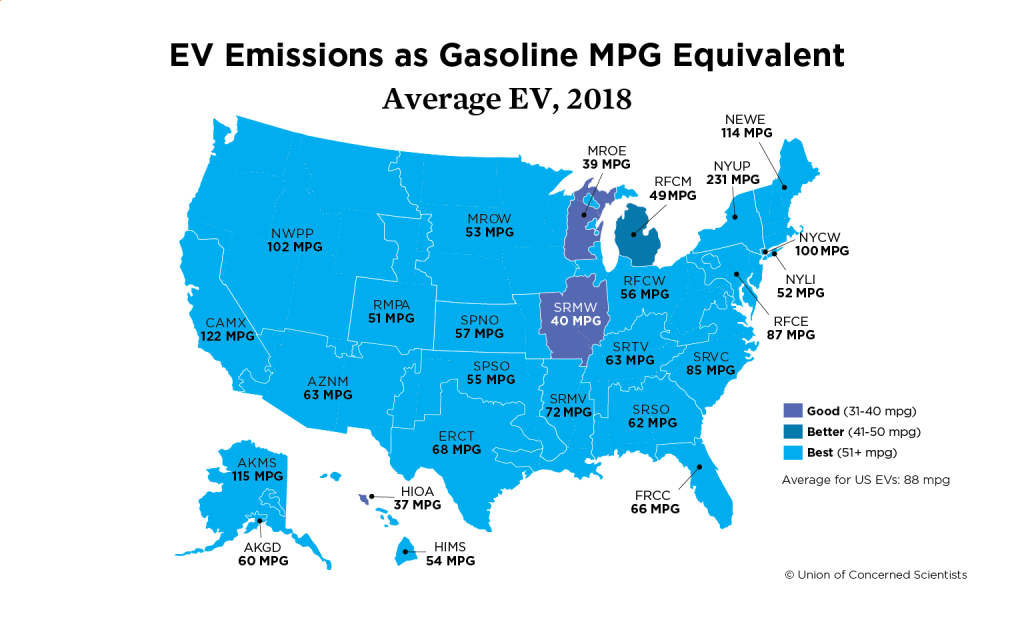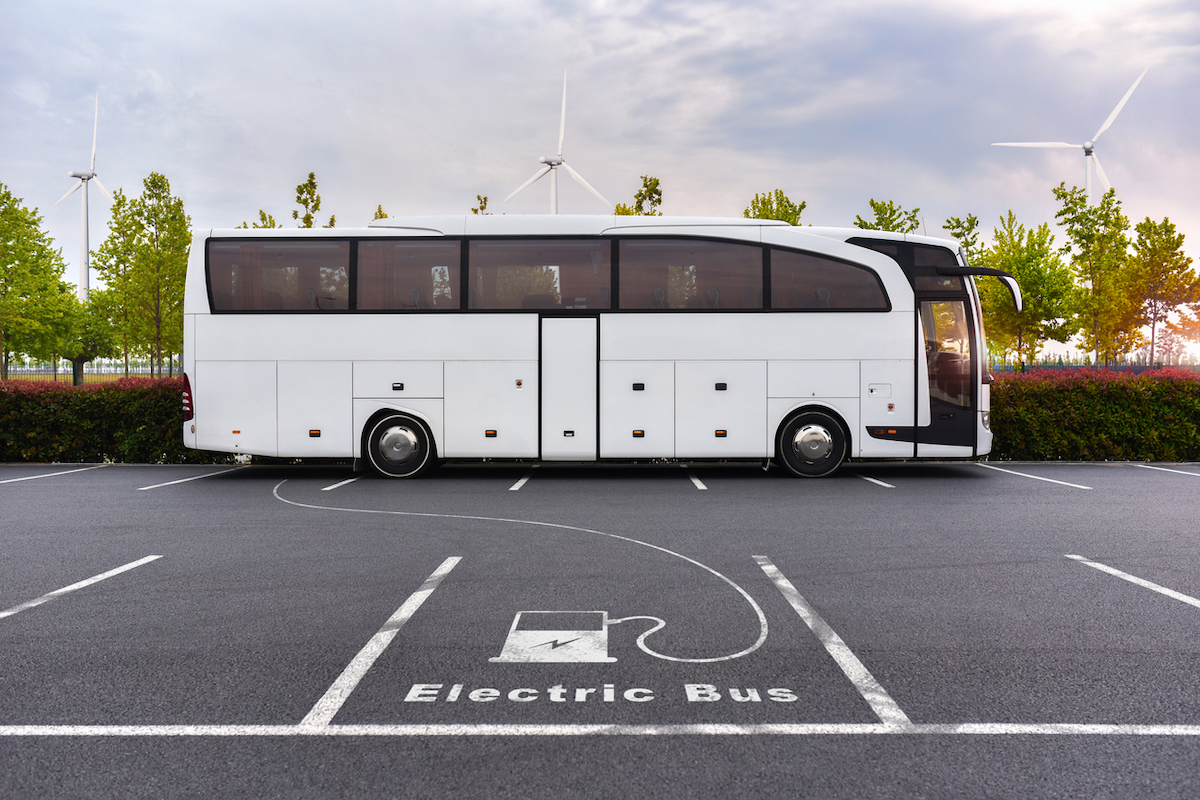As we continue to fight a global pandemic, we are seeing the urgency of implementing the solutions that we've needed for decades, including clean transportation and clean energy solutions. Electrifying transportation can help us combat our climate crisis, improve air quality, protect public health, and strengthen our energy security. The work is underway: California and 10 other states have adopted zero-emission vehicle (ZEV) standards, which require that manufacturers deliver a percentage of their total sales as electric vehicles (EVs).
Electrifying transportation is a key strategy for cities to continue to make progress toward their climate, public health, and clean energy goals, including goals set by Los Angeles and Culver City of making 100 percent of their buses zero-emission by 2028. Those are the earliest target dates for SoCal transit systems. At the state level, the California Air Resources Board (CARB) recently adopted the first-of-its-kind Clean Trucks Rule, setting the standard for one-third of all heavy- and medium-duty vehicles to be zero emissions by 2030. And just last week, CARB adopted rules to clean up emissions from ships in port. Later this year, it will address other freight-related sources like locomotives and refrigerated trucks.
These measures are critical for reducing pollution in the Black, Indigenous, and communities of color that are also disproportionately hurt by this pandemic. In addition to public health and climate benefits, transportation electrification provides greater resiliency during planned power outages and extreme weather events, including wildfires and hotter heat waves.
All too often, the synergies between electrification and climate resiliency are overlooked. Eliminating tailpipe emissions might be the most noticeable. But EVs are already the most effective way to equip the electric grid to make the best use of the new clean energy resources that are necessary for eliminating emissions in all sectors of the economy, including electricity and buildings.
Here’s a quick run-down of why transportation electrification is core to climate-resilient communities:
Three Electric Vehicle Myths, Busted
Myth #1: Charging an EV on a fossil grid (grid powered by fossil fuel combustion) is no cleaner than running an internal combustion engine. Are EVs really the better choice for the environment?
Almost everywhere in the US, plugging in an EV is less polluting than running an internal combustion engine, period. This is true even where the grid is less clean than it is in California.
A recent report by the Union of Concerned Scientists (UCS), “Are Electric Vehicles Really Better for the Climate? Yes. Here’s Why” (Feb 2020), looked at emissions benefits for EVs across all 50 states. The report affirmed that driving on electricity produces significantly fewer emissions than using gasoline, and it’s getting better over time.
According to the UCS report, as of 2018, “94 percent of people in the US live where driving an EV produces less emissions than using a 50 mpg gasoline car.”
In some parts of the country, driving the average new gasoline car will produce four to seven times the emissions of the average EV. For example, the average EV driven in upstate New York has emissions equal to a (hypothetical) 231-mpg gasoline car. And in California, a gasoline car would need to get 122 mpg to have emissions as low as the average EV.

In states like California, where the grid is getting cleaner as the state strives to produce 100 percent of its energy from renewables by 2045, the emissions benefits for EVs will continue to get stronger even as the vehicle ages. No internal combustion engine vehicle, not even plug-in hybrids, can emit less over time as the vehicle ages; only electric vehicles can do that.
Myth #2: EVs are a drain on the grid; are we sure it’s a good idea to put more strain on the grid right now?
Using electric vehicles can actually help avoid rolling blackouts by helping power operators better manage energy supply and demand. With smart charging, EVs automatically draw power at the optimal times for cost, renewable usage, and peak demand.
Smart chargers can receive information from the utility about when electricity prices are high, if fossil-fueled power plants need to be activated to meet demand, and when active flex alerts are in effect. These chargers then defer EV energy use to later time periods when demand is lowest and supply is plentiful, helping grid operators avoid demand spikes and rolling blackouts. This all happens automatically without any work from the EV owner, turning the battery into a grid-stabilization asset for the entire community that’s also fully charged for the individual owner’s use.
During California’s recent rolling blackouts, Sonoma Clean Power was able to dispatch its GridSavvy Community, a group of over 900 electric vehicles -- in addition to smart thermostats and heat pump water heaters -- in advance of flex alerts, reducing strain on the grid and ensuring power was available for everyone.
A recent study found that EV batteries used as a “virtual power plant” in Southern California Edison (SCE) territory could shift the entire residential peak load to nighttime hours if only 10 percent of all cars were EVs. In other words, if EV customers reduce their grid electricity use to zero between the hours of 4pm to 9pm by having their homes draw on EV battery power, they could entirely eliminate the typical -- and expensive -- energy demand spikes across the region during those energy-intensive afternoon/evening hours. The state of California is aiming for well beyond 10 percent EV market saturation within this decade, meaning these EV batteries will become powerful grid stabilization resources for communities across the state.
Myth #3: Gas-powered vehicles don't rely on the electric grid, so why would I buy an EV that's so dependent on a blackout-prone electric grid? Should EVs really be part of our energy resilience plan or emergency preparedness?
Yes, it’s true. Gas-powered vehicles don’t rely on the electric grid. But their refueling stations still do. Rolling blackouts affect everything on the grid, all major appliances and, yes, even gas stations and gas appliances.
The problem with blackouts is not so much about whether we have enough energy, but whether we have enough to cover peaks in demand. EV batteries can charge at the times of day when the gap between electricity supply and demand is the highest, like the middle of the day while most people are busy at work and solar power is abundant, or overnight when people are sleeping and electricity demand is otherwise very low.
The benefits of EVs go far beyond clean transportation: These vehicles are powered by large batteries that can become an energy resource to help manage renewable storage everyday, and to power communities in times of crisis.
Vehicle-to-grid (V2G) technology allows EVs to absorb electricity from the grid when it’s plentiful, and then provide electricity back to the grid when—and where—it’s needed most. Heavy-duty electric vehicle fleets are particularly attractive energy resources. When they are parked, we can greatly expand our capacity to store and use renewable energy. During a power outage or emergency, the batteries could also work as mobile power stations.
Electric school buses are an ideal V2G resource because they stay parked and connected to charging stations most hours of the day and night, as well as throughout the summer. Dominion Energy in Virginia estimates that 1,050 electric school buses could provide enough energy to power 10,000+ homes, and it launched a large-scale pilot that helps school districts purchase electric buses while also helping the utility manage its grid. The first 50 buses will be on the road by the end of 2020.
In California, Torrance Unified School District and Rialto Unified School District launched V2G pilots, and San Diego Gas & Electric has approval to fund an electric school bus V2G pilot. In the future, these electric buses could provide back-up emergency power for hard-hit areas that lose power due to fires, earthquakes, or other natural disasters. With over 480,000 school buses on US roads -- most of them spewing toxic diesel into children’s lungs -- V2G-capable school buses offer a great opportunity to improve energy resilience while clearing our air of pollution.
As we continue the transition from polluting vehicles to clean, zero-emission EVs, we will see more opportunities to improve our environment and public health, and the benefits to our energy grid will become more apparent as the technology becomes more affordable for both business and fleet owners. Switching to cleaner vehicles, adding renewable energy to existing and new buildings, and retrofitting sites for energy efficiency, will be critical to achieving our climate and health goals in the next decade.
It’s the right thing to do
In a state as populous and large as California, replacing polluting vehicles with clean ones will benefit our economy, our air quality, and our health -- to say nothing of the climate crisis. Rather than millions of polluting vehicles on the road, V2G technology and EVs allow us to envision a future where all vehicles are a benefit and asset to the grid, rather than a threat to the millions of Californians suffering from respiratory health issues.
The heat waves not only put stress on our grid; they put thousands of people at greater risk of falling victim to respiratory health issues. When the days heat up, smog and ozone pollution become more deadly. The last thing Californians need during a pandemic and heat wave is additional polluting vehicles.
Putting more EVs on the road can help reduce the pollution burdens and public health threats that are borne by predominantly BIPOC, working class, and frontline communities. As we expand EV access and adoption (especially for the disproportionately polluting heavy-duty freight fleets), we can reduce the environmental harm done to these communities. We must urgently deploy clean energy and clean transportation solutions to prepare us for extreme weather events to come, to become more energy-resilient, and to secure cleaner air for California’s future.
